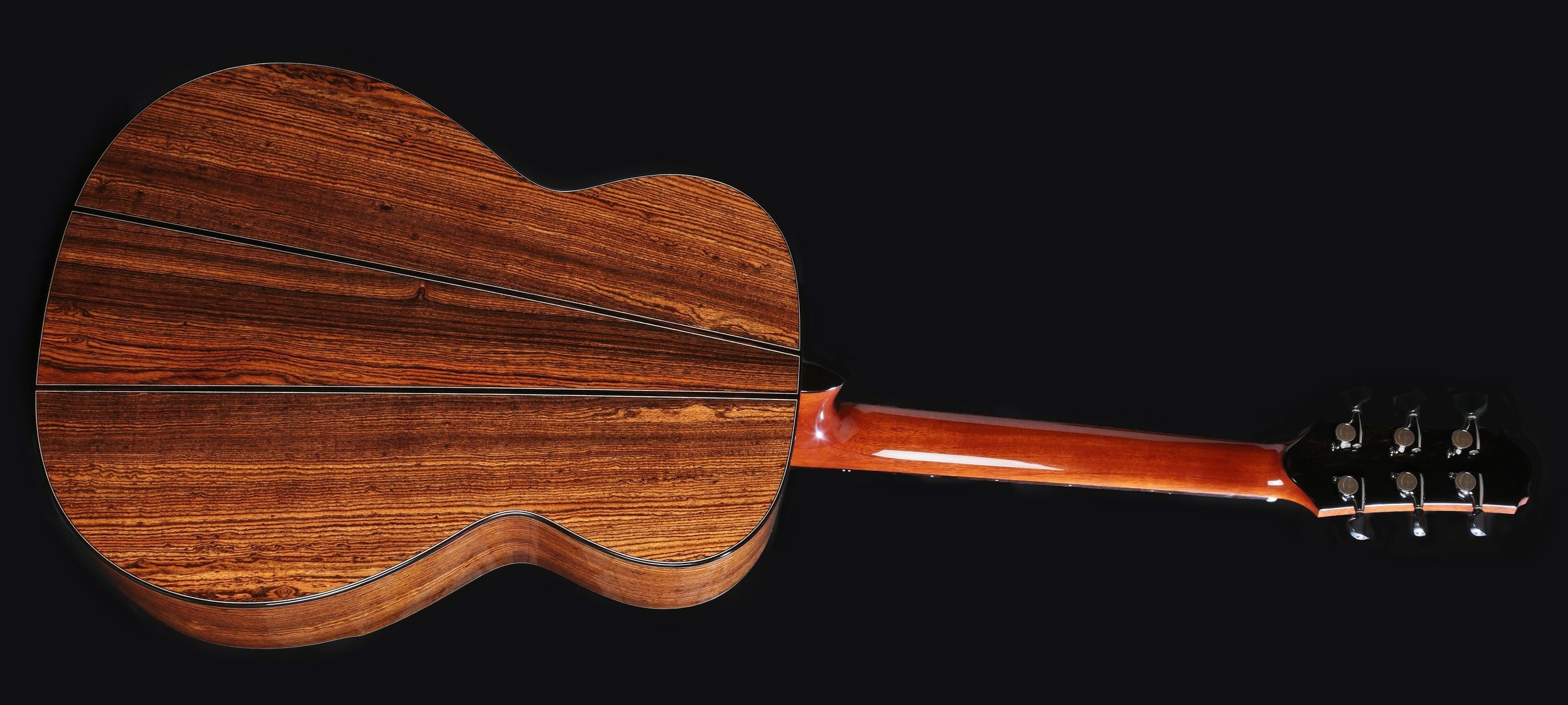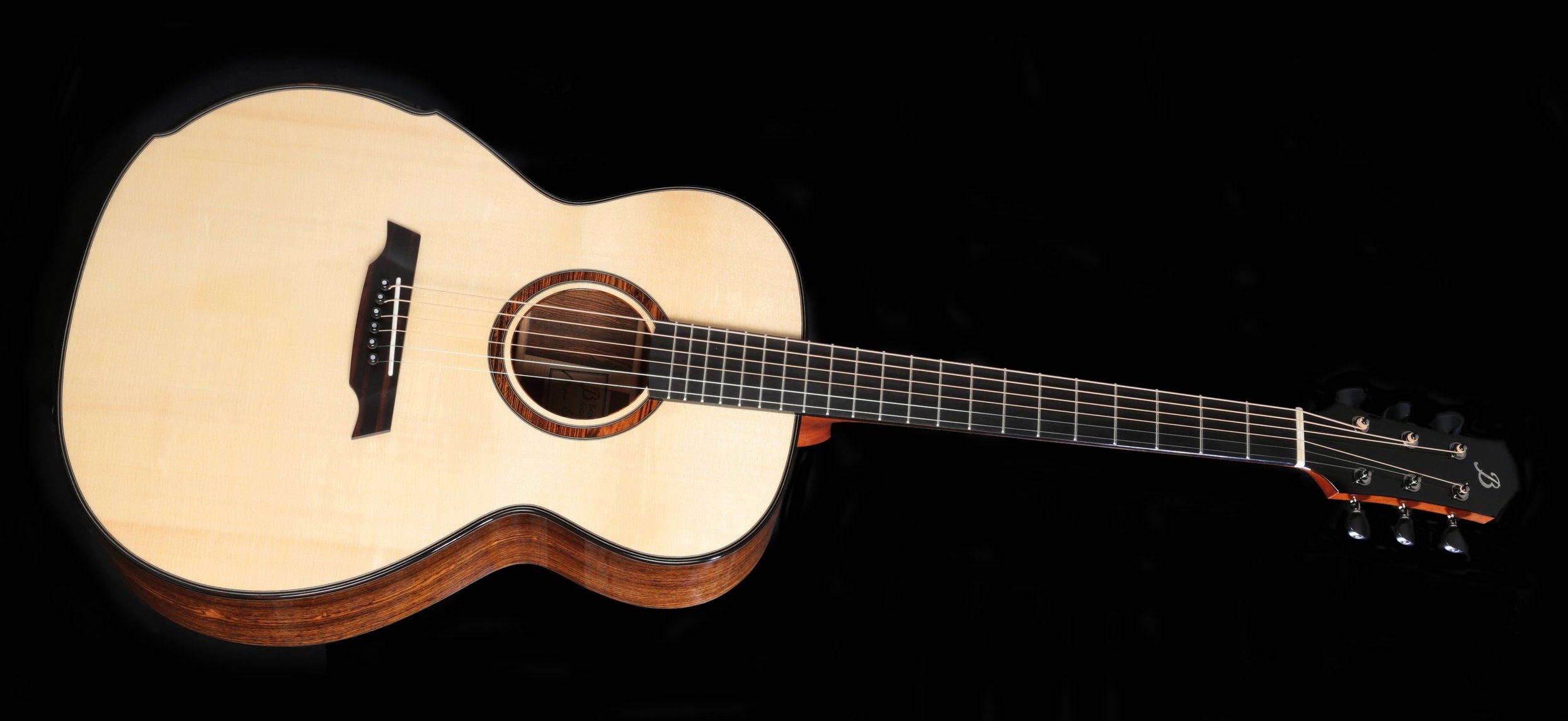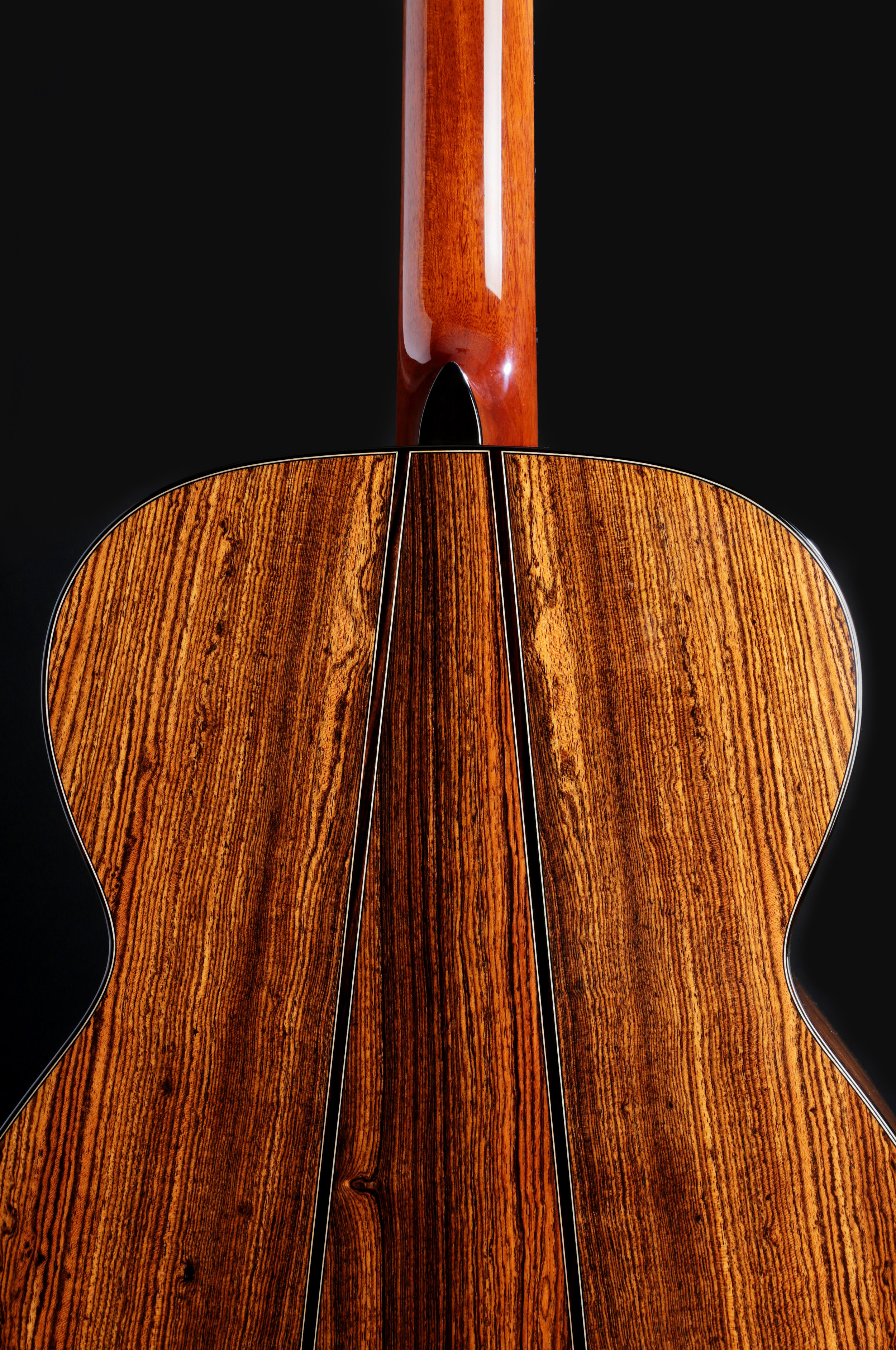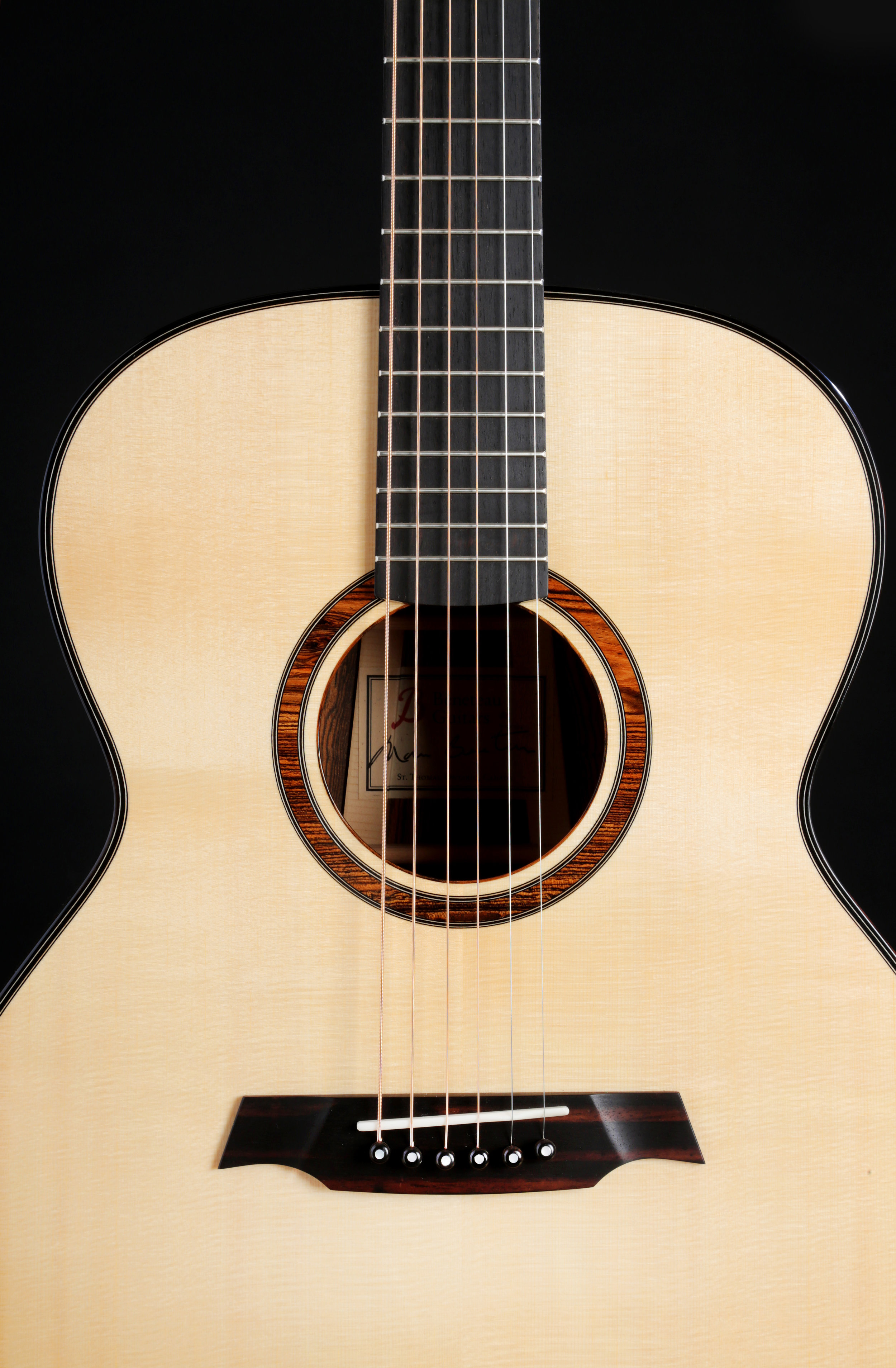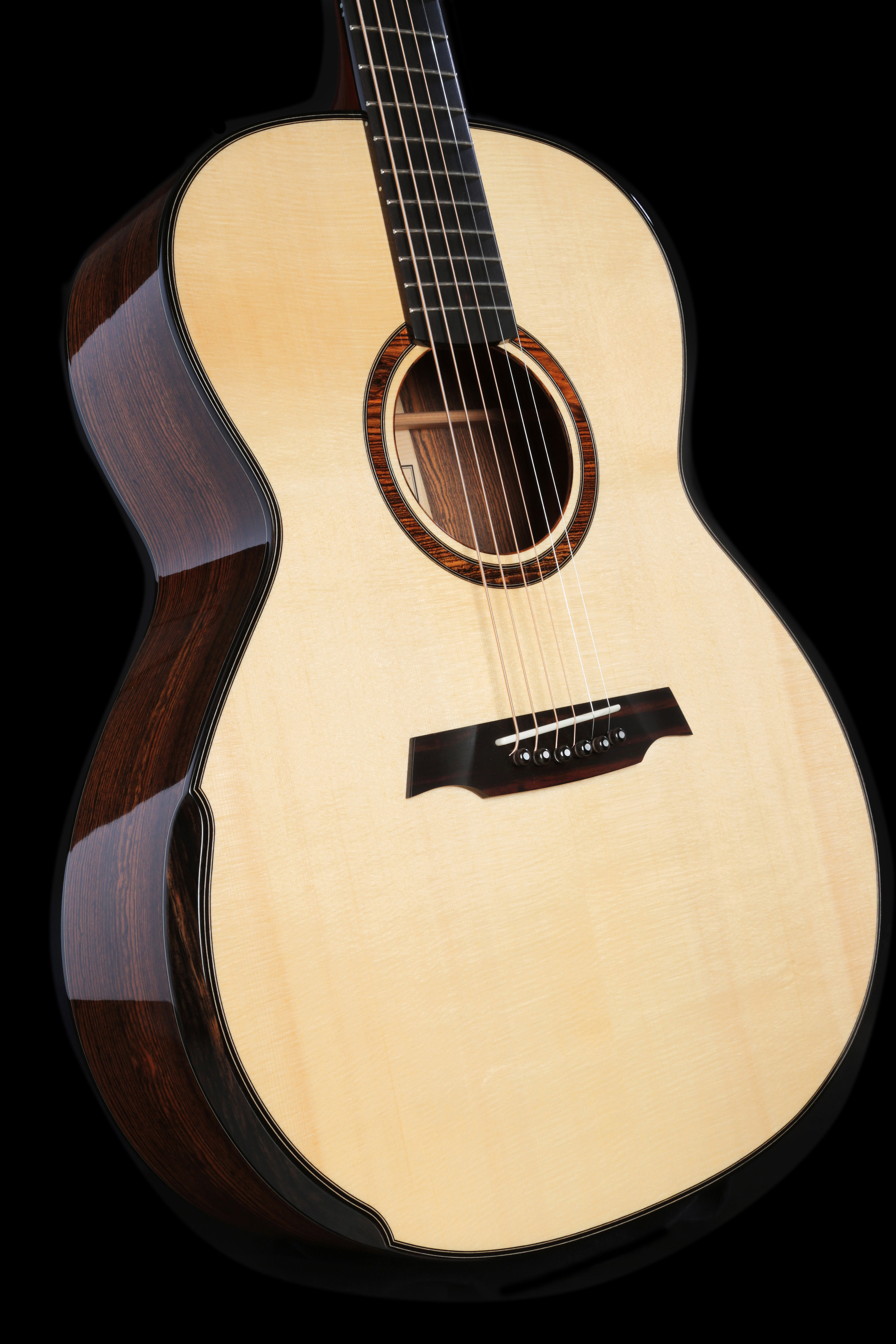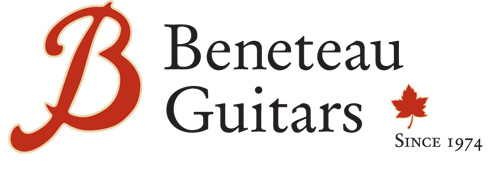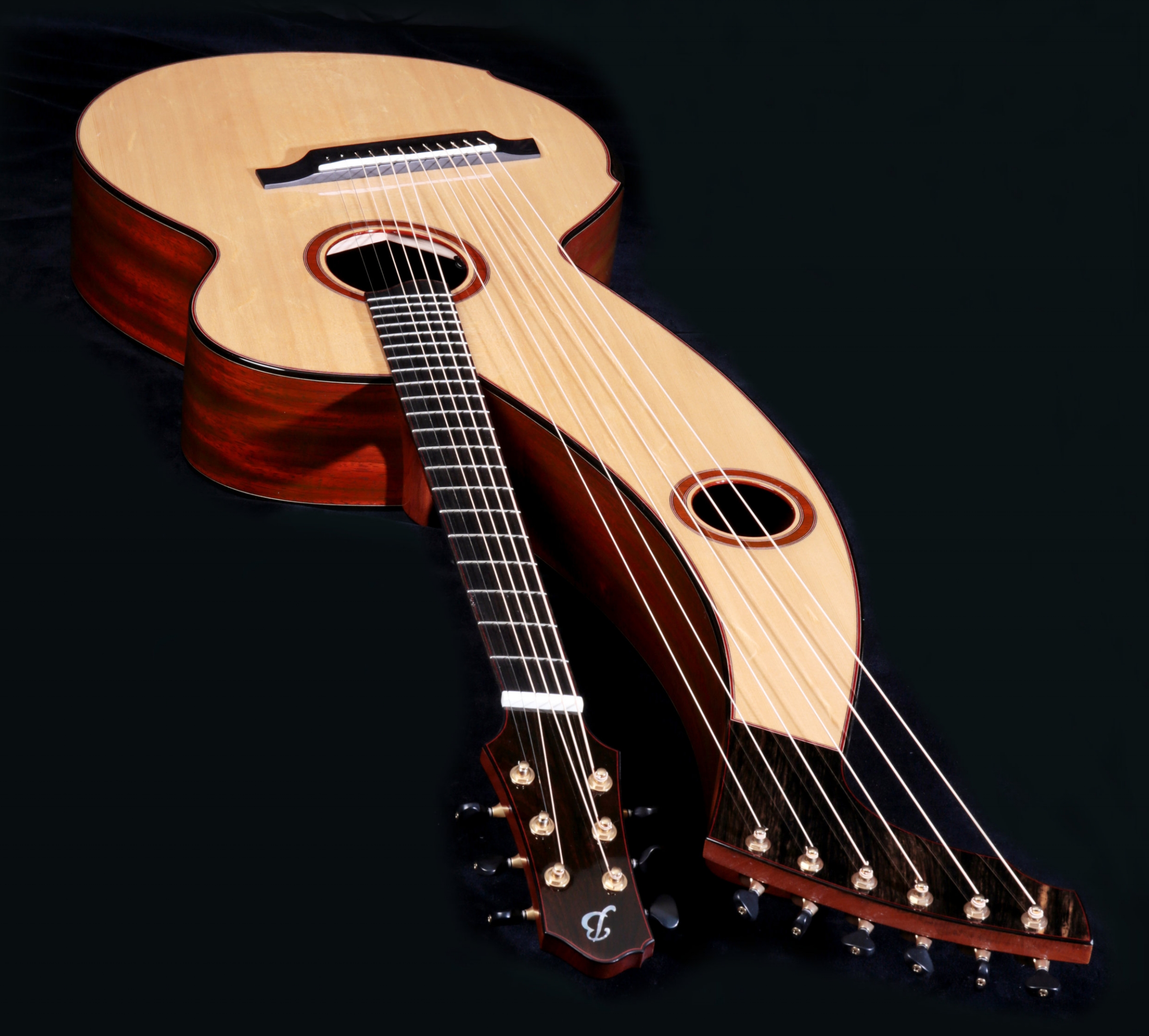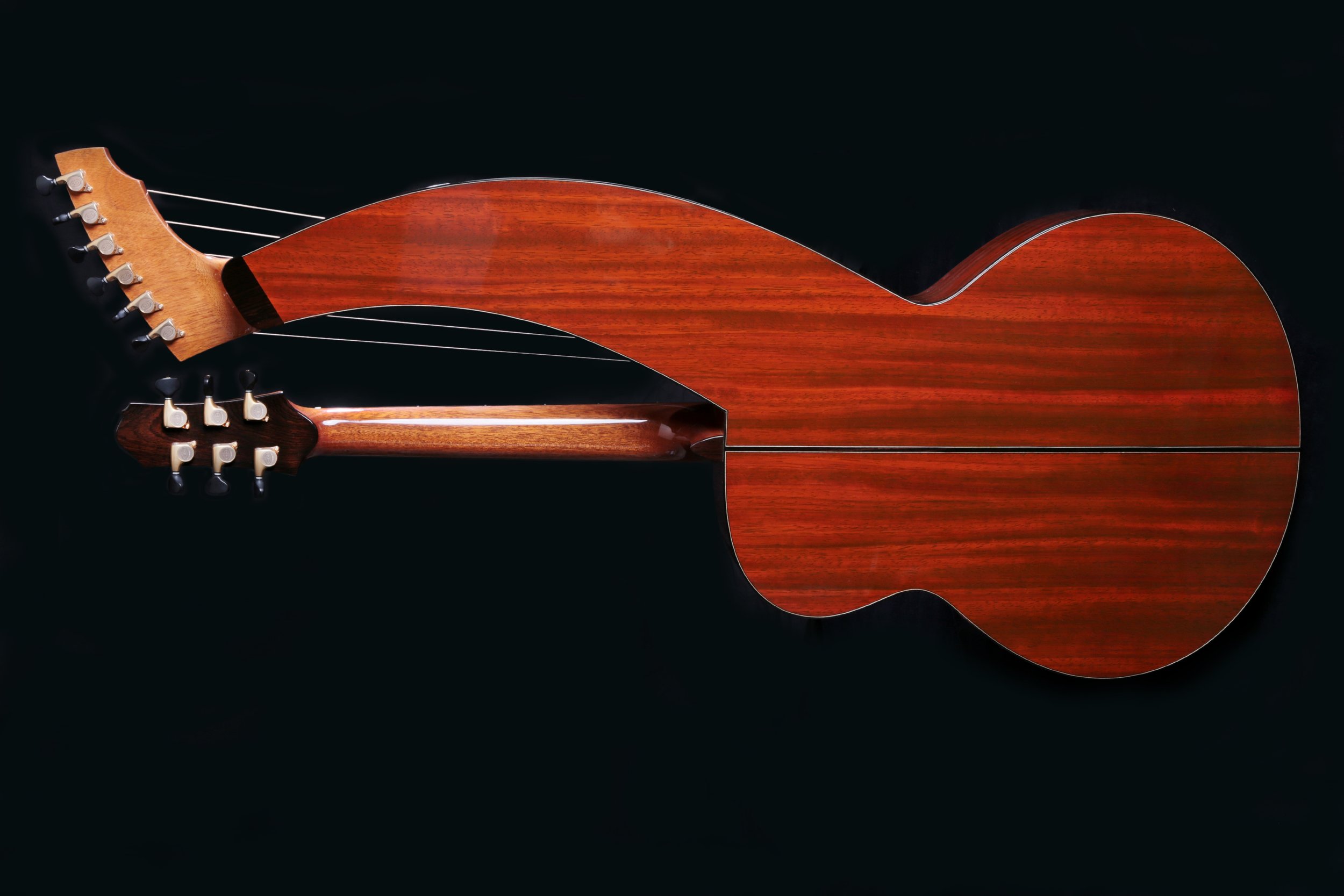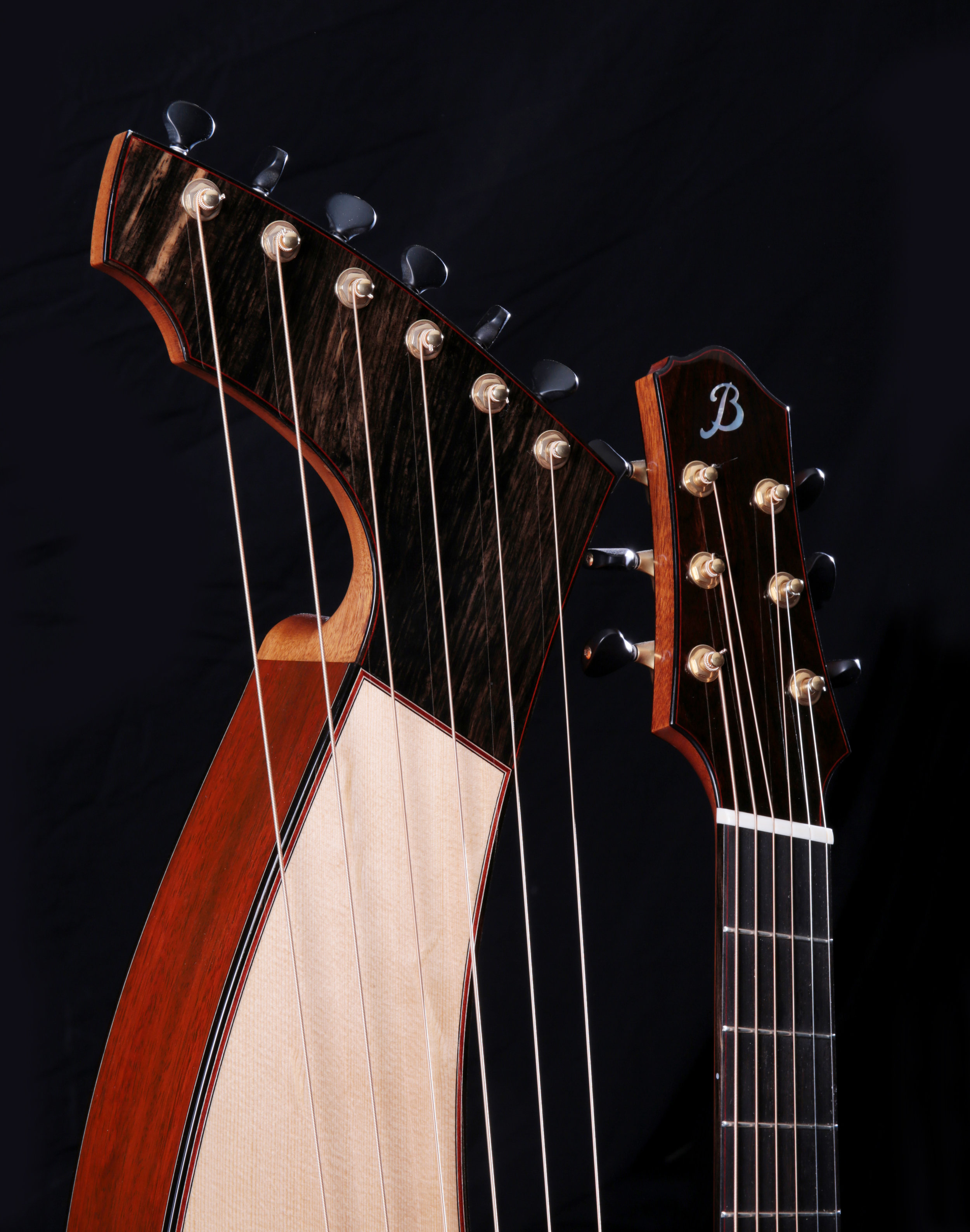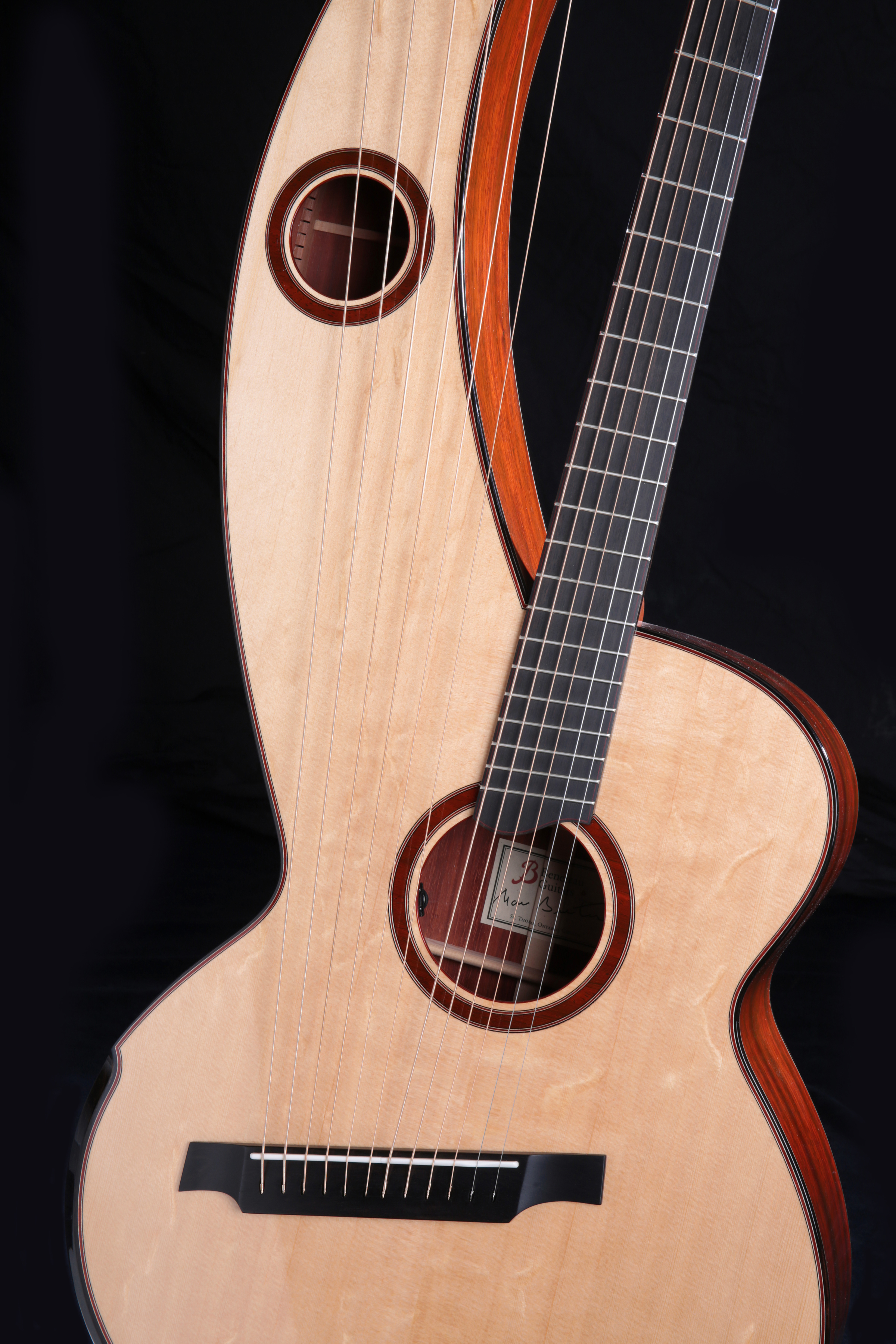Don Ross asked if I would consider taking on a Harp Guitar project. Though my first inclination was to run as fast as I could in the opposite direction, I soon warmed up to the idea and was pretty excited about the challenge involved.
As usual Don gave me a lot of freedom on the design side but had a few details that he wanted to incorporate. The body size would be based on an SJ Jumbo, the same as every guitar that I've built for him and he specified 6 sub bass strings as well as a pinless bridge (a really long one!). Being a Fanfret the main neck used 25.4" treble and 26.25" bass scales.
We chose African Padouk, a wonderful responsive tonewood that also looks great. For the top wood I used a large, but very old piece of Sitka Spruce that had some nice bear claw figure.
The project took two years to complete including much R&D in the beginning and careful design work, especially in regards to the top bracing. After breathing a large sigh of relief I must say that I am pleased with the results. Don now has the guitar in his very capable hands and I am really looking forward to hearing what he comes up with.
Another challenge of this project was sourcing out a case, since you can't buy one of these off the shelf! I was fortunate to find a keyboard flight case where I custom fitted the interior with foam and velour lining which worked out perfectly.
